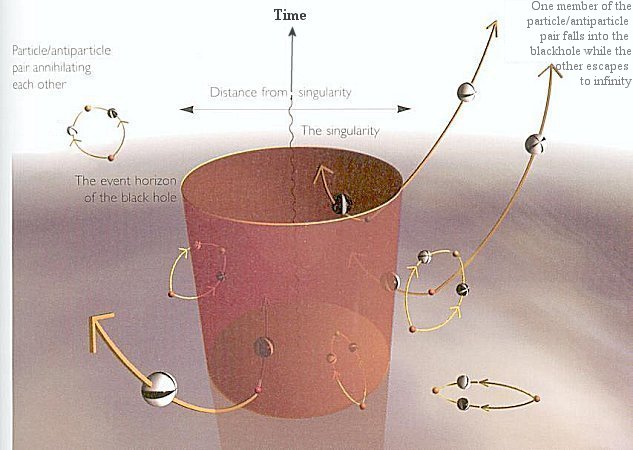 R2, we can derive an expression for the small change of the area dA by throwing in a small amount of mass dm:
R2, we can derive an expression for the small change of the area dA by throwing in a small amount of mass dm:dA = (32
 G2/c4)mdm ---------- (16a).
G2/c4)mdm ---------- (16a).dE = (c4/32m
 G2)dA.
G2)dA.dS = dE/T = (c4/32mT
 G2)dA ---------- (16b),
G2)dA ---------- (16b),where T is the temperature of the black hole in oK. But it has been shown in the topic of Black Hole Entropy that in term of Planck area:
dS
 kB(c3/G
kB(c3/G )(dA/4) ---------- (16c).
)(dA/4) ---------- (16c).T = hc3/(16
 2GkBm) ---------- (16d).
2GkBm) ---------- (16d).

 1 / m, and the rate of radiation L can be expressed as L
1 / m, and the rate of radiation L can be expressed as L  = m / L = 10-35 m3 year, where m is in gm. This makes an ordinary mass black hole (m ~ 2x1033 gm for the Sun) live for a long time and its radiation unobservable.
= m / L = 10-35 m3 year, where m is in gm. This makes an ordinary mass black hole (m ~ 2x1033 gm for the Sun) live for a long time and its radiation unobservable. 